 ¿Se puede conocer una ciudad en un día?
Muchos dirán que no, otros que tal vez o que dependerá a donde se vaya.
Nosotros solo teníamos un día libre en nuestro recorrido a la costa Valenciana,
así que ni cortos ni perezosos dijimos: ¡Somos Valencia!
Si bien la ciudad tiene infinidad de lugares
por conocer os recomendamos ver estas 4 joyas de la arquitectura Valenciana que
son excelentes para un primer acercamiento a esta extraordinaria ciudad:
1. La Ciudad de las Ciencias
¿Se puede conocer una ciudad en un día?
Muchos dirán que no, otros que tal vez o que dependerá a donde se vaya.
Nosotros solo teníamos un día libre en nuestro recorrido a la costa Valenciana,
así que ni cortos ni perezosos dijimos: ¡Somos Valencia!
Si bien la ciudad tiene infinidad de lugares
por conocer os recomendamos ver estas 4 joyas de la arquitectura Valenciana que
son excelentes para un primer acercamiento a esta extraordinaria ciudad:
1. La Ciudad de las Ciencias
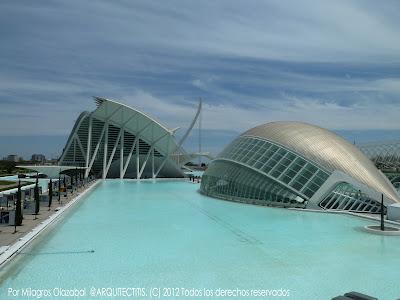
· Arquitecto: Santiago Calatrava, Félix Candela, entre otros. · Inicio de obra: 1994 · Fin de la construcción: 2005 · Tipo de edificación: Complejo arquitectónico cultural y de recreación conformado por los edificios de L'Hemisfèric, Museo de las Ciencias Príncipe Felipe, L'Umbracle, el Oceanográfico, Palacio de las Artes Reina Sofía, Puente de l'Assut de l'Or y el Ágora. · Destacamos: Si bien cada edificio del conjunto da cabida a un análisis y critica extensa (así como su presupuesto) esta vez queremos resaltar el logro que tiene como unidad metropolitana al ser un buen remate espacial para los Jardines del Turia. Ideal para ir en familia, en especial con los niños.
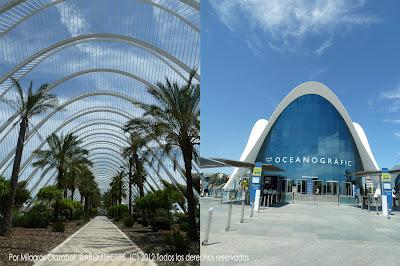

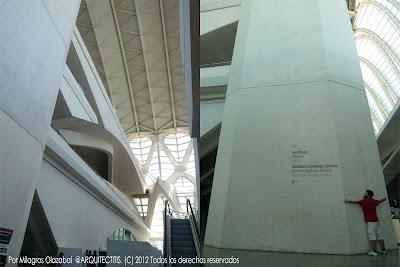
2. Jardines del Turia
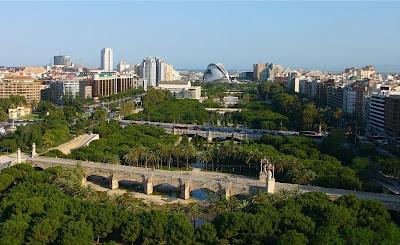
· Arquitectos: Varios · Inicio de obra: 1958 · Fin de la construcción: 2007 (última etapa). · Tipo de edificación: Parque Urbano abierto todo el año · Destacamos: Este parque urbano de 110 ha sido sin duda uno de los lugares que más se disfruta al caminar cuando se recorre la ciudad. Creada en donde fue el cauce del río Turia se empezó a diseñar en el año 1958, después que la riada inundase la ciudad causando graves daños. Si bien el instinto arquitectónico pedía que el cauce del rio vaciado sirviese como vías de circulación automovilístico, esta vez se hizo caso a los reclamos de los ciudadanos por un espacio verde logrando ser uno de los parques más visitados de toda España.
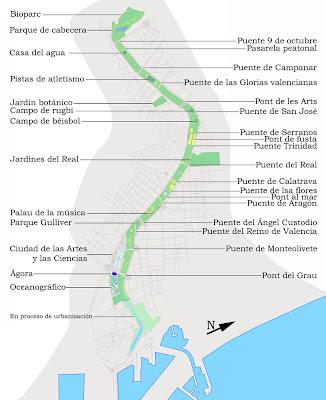

3. Catedral de Valencia
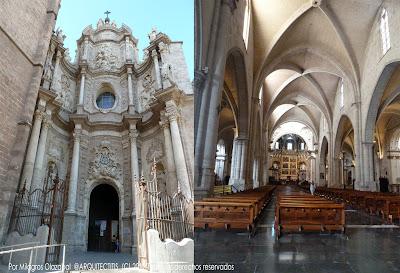
· Inicio de obra: Tiene restos romanos visigodos · Hito constructivo: Jaime I el conquistador puso la primera piedra tras la reconquista española en el año 1238. · Tipo de edificación: Religiosa. · Destacamos: Sus bóvedas de crucería y las ventanas góticas de la cúpula del crucero.

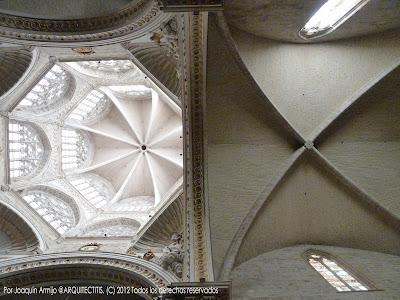

4. Lonja de Seda
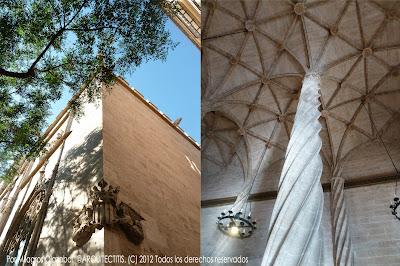 ·
Primer Constructor: Pere Compte
·
Inicio de obra: 1482
·
Fin de la construcción: 1548
·
Tipo de edificación: Edificio gótico civil valenciano
·
Destacamos: La sala de contratación por ser un
espacio abrumador por sus proporciones:
35,6 m. de fondo, 21,4
m. de ancho y 17,4 m. de altura. Cuenta con ventanales estilo gótico y con bóvedas
de crucería las cuales están apoyadas por esbeltas columnas helicoidales. Edificio
declarada
Patrimonio de la Humanidad por la Unesco y digno completamente de nuestra
atención arquitectónica.
·
Primer Constructor: Pere Compte
·
Inicio de obra: 1482
·
Fin de la construcción: 1548
·
Tipo de edificación: Edificio gótico civil valenciano
·
Destacamos: La sala de contratación por ser un
espacio abrumador por sus proporciones:
35,6 m. de fondo, 21,4
m. de ancho y 17,4 m. de altura. Cuenta con ventanales estilo gótico y con bóvedas
de crucería las cuales están apoyadas por esbeltas columnas helicoidales. Edificio
declarada
Patrimonio de la Humanidad por la Unesco y digno completamente de nuestra
atención arquitectónica.
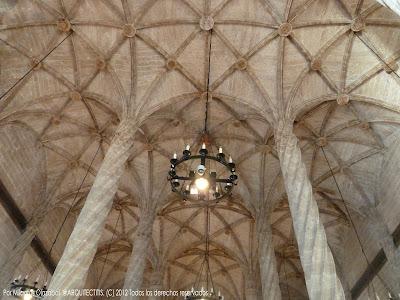
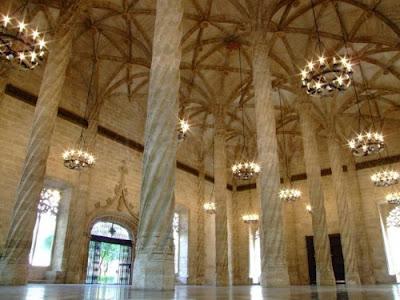
Esperamos sin más que os haya gustado este acercamiento a una de las ciudades más visitadas de España. Y por cierto ¿A dónde irías vosotros en sus próximas vacaciones? ¡Feliz Domingo! (English version) Are you in Spain and you only have a day off to visit somewhere new? Do as we did and go to Valencia! We know this amazing city must be visited with calm and relaxation and has a lot of beautiful places to see. However, today we want to recommend to you 4 of its most outstanding buildings, so you can come back home more than happy. 1. City of Arts and Sciences · Architect: Santiago Calatrava and Félix Candela. · Project Year: 1994 · End of construction: 2005 (last part of the complex) · Type of building: Cultural. This group of buildings is made up of: L'Hemisfèric, Museo de las Ciencias Príncipe Felipe, L'Umbracle, el Oceanográfico, Palacio de las Artes Reina Sofía, Puente de l'Assut de l'Or and the Ágora. · We emphasize: Although each building can be analyzed and criticized harshly, the project in general gains spaces for the city and its citizens, bringing them a great space to go and relax in or carry out all kinds of activities. It is also an amazing culmination point (or, alternatively, starting point) to the Jardines del Turia (Turia Gardens).
2. Jardines del Turia (Turia Gardens Park) · Architect: Several groups of architects · Project Year: 1958 · End of construction: 2007 (last part of the complex) · Type of building: A public park. · We emphasize: This 110-hectare Public Park is an excellent example of good urban planning for the areas formerly occupied by the Turia River. The history of this huge project dates back to the decision of the city government to divert the river south for safety reasons in 1958 after the greatest floods in the history of Valencia in 1957. Since then, this whole linear space at the heart of the city has served as a public park where people can enjoy an open and green environment where that they can also use for a wide variety of activities.
3. Valencia Cathedral · Project year: Built roughly between the 13th and 15th centuries, with later additions. · Type of building: Catholic Church · Style of the construction: early Romanesque and Gothic, with Renaissance, Baroque and Neoclassical additions. · We emphasize: The vault and the gothic windows of its dome, along with its baroque main entrance. Equally incredible is its bell tower, adapted from the minaret of the mosque that used to occupy the ground upon which the cathedral is now erected.
4. Lonja de la Seda · First Constructor: Pere Compte · Project year: 1482 · End of construction: 1548 · Type of building: Late Valencian Gothic style civil building. · We emphasize: The “Sala de contratación” is a gothic space of 35.6 m long x 21.4 m wide x 17.4 m high. Their helical columns and gothic windows are breathtaking.
We hope you enjoyed these tips so you can discover more of Valencia in less time. However, if you can spend more than a day in the city and take a closer look, we strongly recommend it! Now tell us! Where are you going to escape next time you are free? Have a wonderful Sunday!
